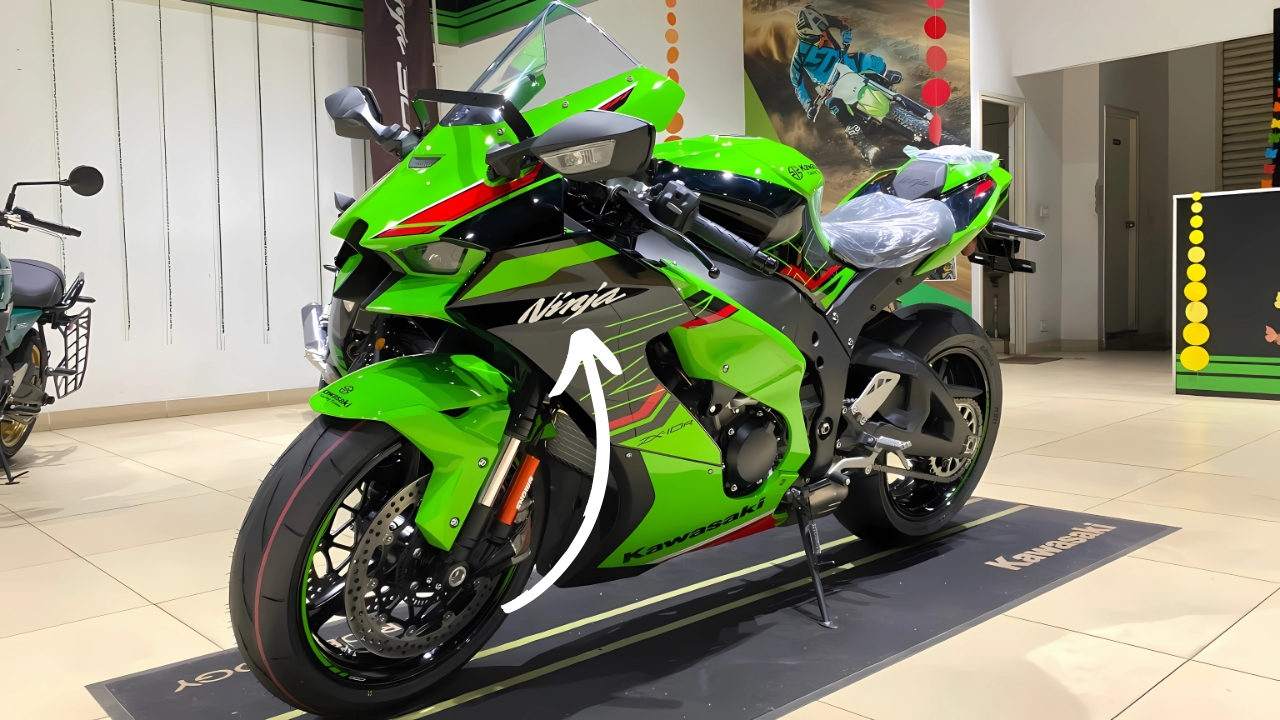Kawasaki Ninja: In the world of high-performance motorcycles, few names evoke the same level of recognition and respect as the Kawasaki Ninja. Since its introduction in the early 1980s, the Ninja lineup has represented Kawasaki’s commitment to pushing the boundaries of motorcycle performance, technology, and design.
This storied nameplate has evolved from a single revolutionary model into a diverse family of motorcycles that spans multiple displacement categories and riding purposes.
Historical Significance
The Ninja legacy began in 1984 with the introduction of the GPZ900R, the original Ninja that revolutionized the sportbike category with its combination of power, handling, and aerodynamic design.
This groundbreaking machine featured a 908cc inline-four engine that produced 115 horsepower—exceptional figures for the time—and achieved a top speed exceeding 150 mph, establishing new benchmarks for production motorcycles.
The original Ninja gained further cultural significance through its prominent feature in the 1986 film “Top Gun,” cementing its status in popular culture beyond motorcycle enthusiasts.
This early success established a foundation for what would become one of motorcycling’s most enduring model lines.
Design Philosophy
Throughout its evolution, the Ninja lineup has maintained a design philosophy that balances aggressive aesthetics with functional aerodynamics.
The distinctive angular bodywork serves multiple purposes—creating visual impact, reducing drag coefficient, and managing airflow to both cool critical components and increase stability at high speeds.
The signature Kawasaki Lime Green color option has become inextricably linked with the Ninja brand, though models are available in various color schemes to suit different tastes.
The design language has evolved over generations while maintaining recognizable elements that identify the bikes as members of the Ninja family.
More recent iterations incorporate advanced aerodynamic features including integrated winglets on flagship models that generate downforce at high speeds, improving stability during aggressive acceleration, cornering, and braking.
These elements represent the marriage of racing technology with production motorcycles that has characterized the Ninja throughout its history.
Performance Evolution
The Ninja lineup has consistently pushed performance boundaries, with the flagship ZX-10R and limited-production H2 models representing the pinnacle of Kawasaki’s engineering capabilities.
The current ZX-10R produces approximately 200 horsepower from its 998cc inline-four engine, while the supercharged Ninja H2 generates over 230 horsepower from its forced-induction 998cc powerplant.
Beyond raw power figures, Ninja models have pioneered numerous technological advancements in the motorcycle industry, including:
-
Ram-air induction systems that increase power at high speeds by forcing pressurized air into the engine
-
Sophisticated electronic rider aids including multiple power modes, traction control, launch control, and cornering ABS
-
Advanced suspension systems with electronic adjustment capabilities
-
Lightweight chassis designs utilizing aluminum and, in premium models, carbon fiber components
These performance capabilities have been proven through the Ninja’s extensive racing success, particularly in the World Superbike Championship where Kawasaki has secured multiple manufacturer and rider championships.
Model Diversity
What began as a single flagship model has expanded into a comprehensive lineup that spans multiple displacement categories and intended uses. Current Ninja models include:
-
Ninja 400: An accessible entry point with balanced performance suitable for newer riders
-
Ninja 650: A middleweight option that combines sporting capability with everyday usability
-
Ninja ZX-6R: A focused 600cc supersport designed for both track and street use
-
Ninja 1000SX: A sport-touring variant that emphasizes comfort for longer rides while maintaining performance capabilities
-
Ninja ZX-10R: The flagship superbike designed for ultimate performance
-
Ninja H2 Series: Limited-production supercharged models representing the absolute pinnacle of production motorcycle technology
This diversity allows the Ninja brand to address different rider experience levels, budgets, and intended uses while maintaining the performance-focused character that defines the nameplate.
Technological Innovation
Beyond engine performance, the Ninja lineup has pioneered numerous technological innovations that have subsequently influenced the broader motorcycle industry. The current generation ZX-10R incorporates sophisticated electronics including:
-
Integrated inertial measurement unit (IMU) that monitors vehicle movement in six axes to inform electronic intervention systems
-
Cornering management function that modulates power delivery based on lean angle
-
Electronic cruise control for reduced rider fatigue during highway travel
-
Multi-level traction control systems that can be adjusted according to rider preference and conditions
-
Bidirectional quickshifter allowing clutchless gear changes both up and down the transmission
The limited-production H2 models further showcase Kawasaki’s engineering capabilities with their supercharged engines—unusual in production motorcycles—and specialized cooling systems designed to manage the additional heat generated by forced induction.
Racing Heritage
The Ninja’s development has been significantly influenced by Kawasaki’s racing programs, with technology and design elements flowing between competition and production machines.
The ZX-10R in particular has achieved remarkable success in the World Superbike Championship, securing multiple championships with riders including Tom Sykes and Jonathan Rea.
This racing heritage influences not only the flagship models but also informs the character of the entire lineup, with even the more accessible Ninja 400 demonstrating handling characteristics and design elements derived from its larger siblings.
Kawasaki Ninja
The Kawasaki Ninja represents one of motorcycling’s most successful and enduring model lines, having evolved from a single revolutionary model into a diverse family of performance motorcycles.
By consistently pushing the boundaries of what’s possible in terms of engine output, handling dynamics, and technological integration, the Ninja lineup has maintained its position at the forefront of sportbike development for nearly four decades.
For enthusiasts seeking high-performance motorcycles with proven engineering and distinctive character, the Ninja family continues to offer compelling options across multiple categories, ensuring this iconic nameplate remains as relevant today as when it first revolutionized the sportbike segment in 1984.

